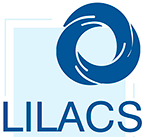Coping strategies in patients with diabetic peripheral neuropathy in a family medical unit in Tabasco
DOI:
https://doi.org/10.19136/hs.a23n2.5729Abstract
Objective: Determine Coping Strategies in patients with Peripheral Neuropathy with Type 2 Diabetes in a Social Security Family Medicine Unit in Tabasco, Mexico.
Material and methods: Observational, cross-sectional and analytical study. Sample n=118 patients with Type 2 Diabetes, who met the inclusion criteria and agreed to participate with prior informed consent. A sociodemographic-clinical data questionnaire was applied, the coping strategies inventory (CSI) and evaluation of Diabetic Peripheral Neuropathy with a modified instrument from the Family Medical Information System (SIMF), IMSS. The information was obtained from patients and clinical records. The analysis of the information included descriptive and inferential statistics with Pearson's chi square and p value≤0.05. The data processing was carried out with SPSS 26 program.
Results: Patients aged Ⱦ=59 years, women 73.7% (87), married 55.1% (65), housework 52.5% (62), secondary school 32.2% (38). With HbA1C ≥7%: 83.1% (98), BMI Ⱦ≥30 Kg/m2. Peripheral Neuropathy stage II and III was observed with HbA1C ≥7%, without coping 62.2% (61), with X2=11.508, df=3 and p=0.003 statistically significant.
Conclusions: Patients with glycated hemoglobin HbA1C≥7% presented inadequate maladaptive coping strategies fo5cused on emotion, with the primary subscales social withdrawal and self-criticism predominating. Stage II peripheral neuropathy with HbA1C ≥7% was more prevalent in women whose coping strategies were inadequate, maladaptive, focused on emotion.
Keywords: Coping strategies, peripheral neuropathy, Type 2 Diabetes, Glycosylated hemoglobin.
Downloads
Downloads
Published
Issue
Section
License
Copyright (c) 2024 Horizonte Sanitario

This work is licensed under a Creative Commons Attribution-NonCommercial-ShareAlike 4.0 International License.





























